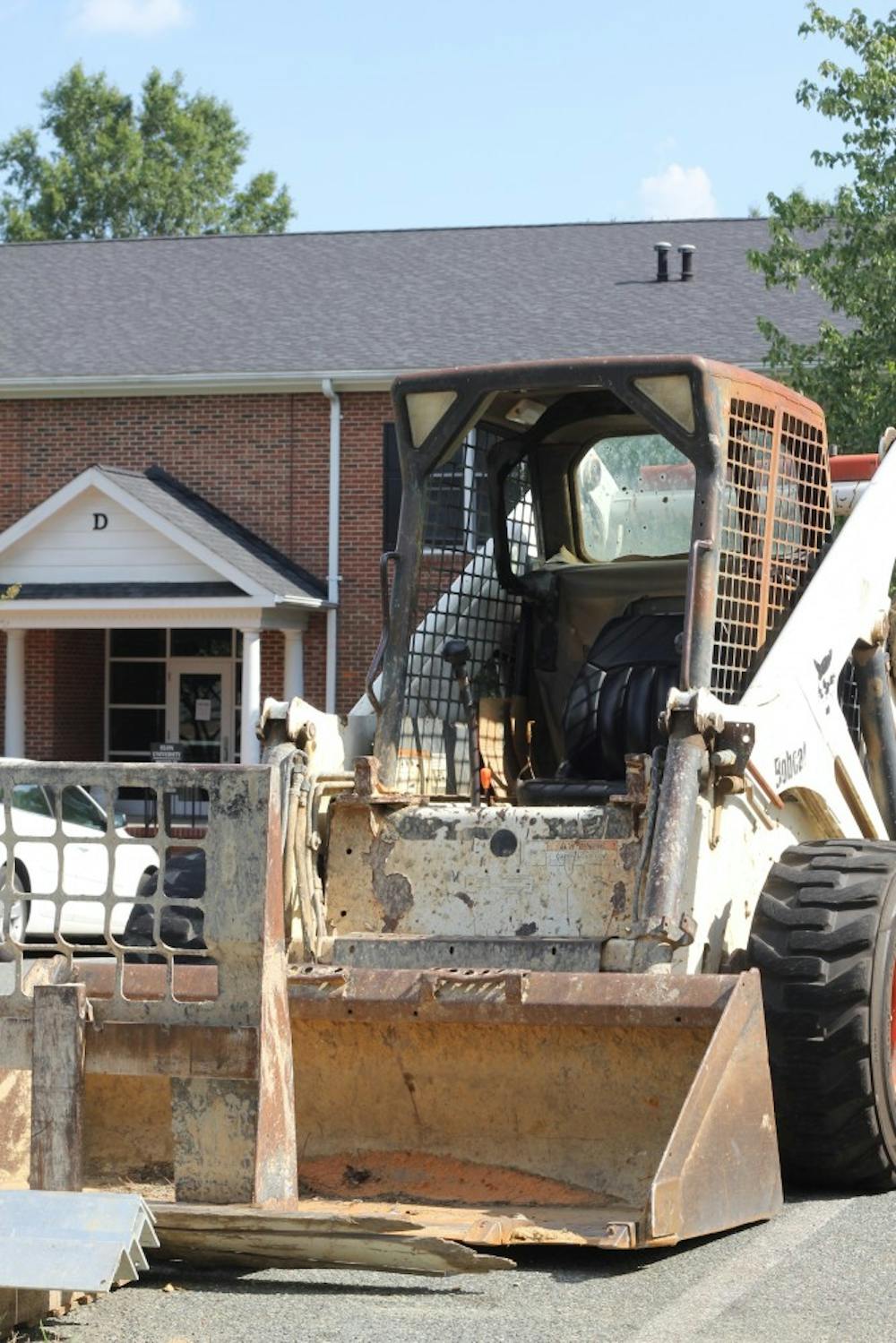The pile of dirt outside McEwen Building, affectionately referred to as Mount McEwen, is only one of the latest in a long series of changes Elon University has made in the past few years. Many of these changes have called for extensive construction projects, but the latest adjustments from Residence Life are more low-profile.
The Residential Campus Initiative, started in 2009, is a part of the Elon Commitment that seeks to encourage more students to live on campus all four years and to further engage students with university values.
So far, efforts as part of the initiative have included adding more buildings, rearranging student distribution on campus and linking residential life with academic life. But this year, Residence Life is rebranding its initiative as Living and Learning at Elon.
Living and Learning at Elon seeks to seamlessly integrate academic life and residential life. Elaine Turner, director of Residence Life, said the new name is intended to remind the Elon community that these integration efforts aren’t limited to on-campus residents.
“In a nutshell, it’s a goal of seamlessly integrating the residential component with academic life on campus,” Turner said. “We want faculty, staff, students to know that we are all in this together, and it is a campus-wide initiative.”
Part of that integration calls for bringing more students into the on-campus residential community.
“We want to increase and expand so we can create a vibrant residential campus,” Turner said. “We’re definitely looking at how we can increase and expand that pool of students living-in.”
As of the 2011 release of Elon’s strategic plan for development, the Elon Commitment, Elon was able to house 58 percent of the undergraduate population, or approximately 3,030 students. In the years since, as the student population has increased, the university has also managed to increase its on-campus population to 63 percent of undergraduates for the 2015-2016 academic year. Turner said the goal is to have at least 70 percent of students on campus by 2020.
“There’s definitely some talk of how we’re going to get there in the next five years,” Turner said. “For us to get there, there may be more construction.”
For the moment, there are no immediate plans for new projects.
According to MarQuita Barker, associate director of Residence Life for Operations and Information Management, one of the biggest changes in the on-campus population has been in the growing number of upperclassmen — juniors and seniors — who choose to live on campus. In the last few years, that number has risen from approximately 500 to 750 juniors and seniors living on campus.
Part of the drive to attract more juniors and seniors to on-campus housing is this year’s new program for RAs. In areas with apartment-style rather than dorm or suite-style housing, the traditional RA has been replaced with apartment managers.
“We’ve found that apartment needs are different,” Barker said. “[Apartment managers’] responsibilities are different to better meet the needs of apartment students.”
Apartment-style housing, such as that at The Station at Mill Point and The Oaks, and the new apartment manager program is designed to provide freedom to older students while keeping them engaged on campus. Turner added that apartment-style housing is also meant to be a transition for older students as they prepare to move from living in residence halls to living in real world settings.
“We want to give them some amount of laxity, of freedom, to develop their own ideas, perspectives and forms of interaction,” Turner said.
The next step in this plan is Park Place, set to open fall 2016. The 129-bed facility, located on West Haggard Avenue, will provide another option for apartment-style housing for juniors and seniors.
“I think we’ve seen an increase in the number of students who want to live on-campus as juniors and seniors over the last few years,” Barker said. “We hope to be able to house all juniors and seniors on campus who want to live on campus. We definitely want to be able to give you the option.”
Another major shift in the distribution of on-campus residents has been the centralization of students by year. In previous years, the majority of freshmen were housed in the Danieley Neighborhood. For the Class of ’19, only 227 freshmen are in Danieley, Barker said. The rest of the neighborhood, which the Residence Life website says can house up to 812 students, is primarily populated by sophomores.
“That style of housing is more conducive to sophomores than first-years,” Barker said. “The goal has always been to put sophomores in Danieley and first-years in the center of campus.”
Barker also said that there are fewer freshmen in Danieley now than in previous years, though limited spaces mean that a few freshmen are still housed there. The rest of the freshman class is housed in the Colonnades, Global and Historic neighborhoods — 172, 410 and 650 students in each area, respectively — all of which are much closer to academic buildings and dining facilities than Danieley.
With freshmen housed in various neighborhoods across campus, they will often have older students as neighbors. This, Barker said, is intentional.
“We’ve always mixed students in the neighborhoods by class,” she said. “We believe in mentoring, so we believe that first-year students can get positive influences from older students.”
Areas such as Colonnades, Danieley and Global, in particular, will provide plenty of opportunities for mentorship. And Residence Life is looking to add more.
“We’re looking at coming up with some more layered mentoring positions we can have in the residential areas,” Turner said. “We see the need for students to mentor each other.”


